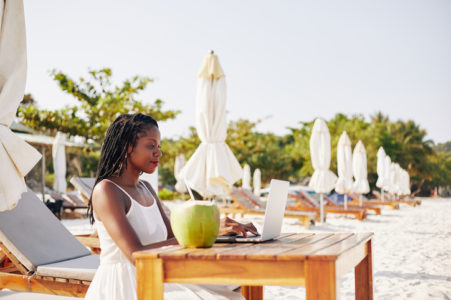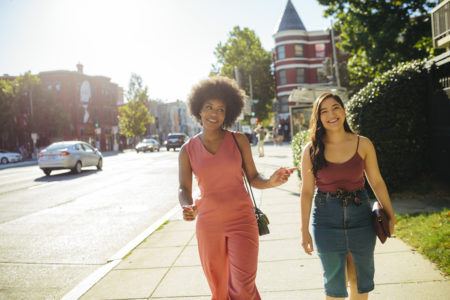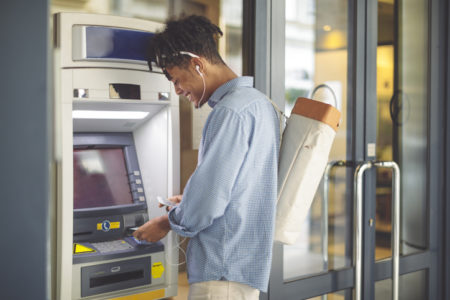After months on the road solo traveling Central America, I can say it’s a favorite region to go solo. There are definitely highs and lows of solo traveling (everywhere). The good news is there are some things that I have been fortunate to learn, experience and retell.
This solo adventure in the region known for its vastness, cultural roots and incredible views has shown me a new side to solo travel. Some of the most beautiful landscapes exist in Central America. Whether you start in Panama and make your way up to Mexico in North America or go the opposite way and head down to Colombia in South America, there is so much to look forward to.
My trip has included Belize, Costa Rica, Panama, Nicaragua and Guatemala — so far. I will focus on these countries but keep in mind that El Salvador and Honduras are yet to be explored. Additionally, I exclusively explored the Caribbean diaspora in Central America so stayed along the gorgeous Caribbean coast. Here is a quick guide on what to expect when solo traveling to Central America.
Remote work in Central America

Working remotely in Central America, particularly the coastal and even island destinations, has been interesting. I was expecting the worst in most locations but was pleasantly surprised. Most locations have infrastructure for digital nomads and remote workers which gives you the best of both worlds – tropical vibes and high-speed(ish) internet.
Costa Rica was probably the most accessible location for me as a remote worker who has regular video calls. Belize (Caye Caulker) was also impressive. I think that my trickiest situation was in Nicaragua where I spent a month on Big Corn Island, arriving just as they were changing the providers over which meant regular blackouts and hours without connectivity. Little Corn Island is a smaller island with no electricity (for most of the island) during the daylight hours, which is why I only went there once, to chill.
In general, I had a good experience and the awful experiences were character building, patience inducing and often led to me leaving the house and enjoying the island for what it is, an unmatched place to drink fresh, non-packaged coconut water.
Getting around

One of my main reasons for choosing Central America as a region to solo travel for a few months was because of how well-connected it is. Getting from country to country by bus was my go-to. Most people traveling through Central America will do so via Tica bus. It is super professional (and the very opposite of a chicken bus, we’ll get there) comfortable and affordable. A single trip from San Jose, Costa Rica to Managua, Nicaragua cost me about $30. Flights are also widely available through sometimes, depending on your location, they are not always direct.
Transport obviously differs once you’re in the country – ranging from Ubers for the bigger cities, local taxis, chicken buses (local buses, usually old school buses that are considerably cheaper though rickety), rentable bikes, boats, and even golf carts.
Language

My favorite thing about traveling through Central America is 1) being able to understand the Spanish with much more ease and 2) listening to the different musicality in each country.
Coming from Mexico, I found the Spanish in Costa Rica and Nicaragua considerably easier to understand and learn from. Most people speak English too in the tourist spots but are also down to let you practice with them.
As I mentioned, my main reason for traveling this particular region was to connect with the Caribbean diaspora. Creole was a huge part of that experience. Belizean Kriol is by far my favorite and maybe the furthest from Jamaican Patwa which is my heritage. It was so beautiful and affirming to see how connected each of these destinations were through their Creoles. The Guary Guary in Panama’s Bocas del Toro and the Creole in Nicaragua and Costa Rica had many similarities too.
Safety in Central America

This is so so relative and has a lot to do with how you personally like to travel, the regions you choose, your capacity to ‘blend in’ with the locals, the type of accommodation you prefer and so much more. Generally speaking, I felt safe as a Black woman solo traveler in Central America. There were certainly destinations where I felt my safety challenged more, before I discuss those destinations, I would like to point out that this is very personal.
That being said, Managua is a destination known for its security issues. My Airbnb was about a 7- minute walk from the Metrocentro and on my street there were (I kid you not) at least 10-12 police officers in that short walking distance. Even though the capital of Nicaragua, Managua is not a main stop for tourists. This might contribute to the poorly-maintained state of the city and the higher levels of crime.
Equally, I felt less secure in the capital cities such as San Jose and heard similar stories about parts of Panama City. My theory is that, growing up in London, I know how to operate in city mode- it is the opposite of island-living, coastal life etc. Naturally, being in a city makes me feel like there is less warmth. There is typically a lack of community and familiarity because it is not a small town-like vibe. While crime rates are useful to be aware of, I generally preferred being in smaller communities where you can get to know people personally and there is more accountability in ways that I don’t feel exist in capital cities. It is useful to know what you prefer and navigate in that way.
As a Black woman solo traveler I felt that in Panama (Bocas del Toro) and Costa Rica (Puerto Viejo) I met other solo women travellers which normalized it and made me feel safe. The culture in all of the destinations so far felt familiar to me as a Jamaican which made me feel more at ease and so safe.
Community and cultural norms

As a long-term traveler, I typically spend vast amounts of time in a location and so finding community is a huge part of my lifestyle. I found this to be easiest while living on Big Corn Island in Nicaragua where the island has more of a local vibe as well as in Caye Caulker where the small island vibes mean you end up seeing and speaking to everyone at least twice a day.
Many of the countries in Central America on the Caribbean coast have multiple cultures existing in one place. You’ll see the Latin American culture and the Caribbean culture aside the Mayan culture and sometimes more (i.e. the Garifuna culture in Guatemala, Honduras and Belize).
My advice is to embrace it all and wander outside of the expat communities to actually get to know those who are part of the community.
Money

The cost of living massively differs in each country in Central America. I found the most expensive country to be Costa Rica, followed by either Belize or Panama. Guatemala sits in the middle while I found Nicaragua to be the least expensive. Costa Rica, Panama and Belize all accept USD as a currency which contributes to the cost of living.
In summary, I have Central America to thank for some of my best memories of solo travel. There is so much more to see but so far, I feel that it is a region teeming with so much character and diasporic conne





